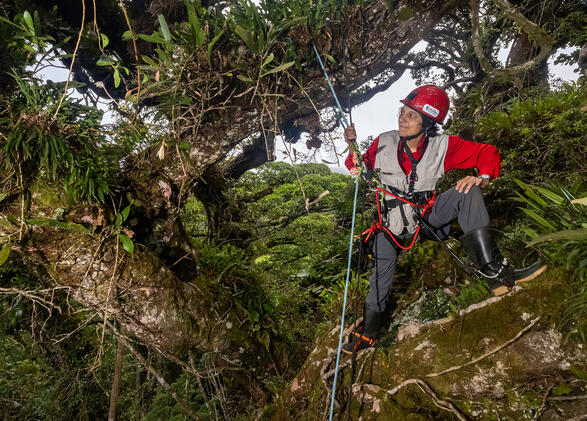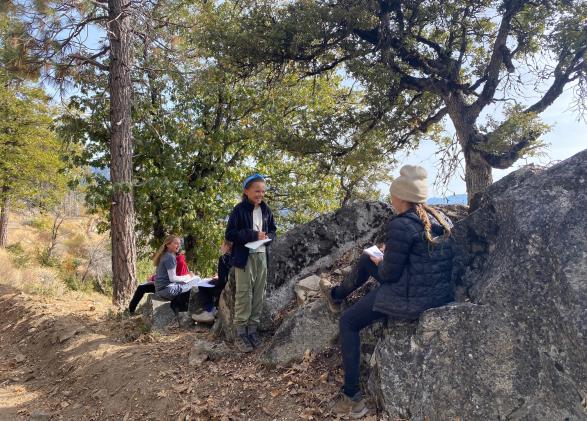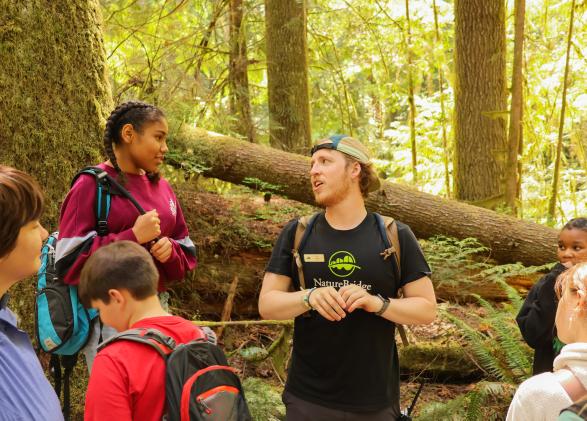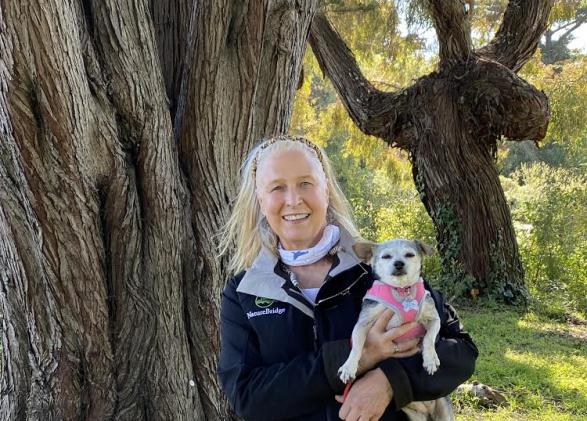Stewardship

Discovering the Hidden World of the Treetops with National Geographic Explorer Nalini Nadkarni
On Thursday, February 27, the Field Arts and Events Hall in Port Angeles, WA became a gateway to the hidden worlds of forests. Hosted by National Geographic Live, From Roots to Canopy brought together science, storytelling, and inspiration, featuring renowned tree canopy ecologist and National Geographic Explorer Nalini Nadkarni.

Fall Reflections from NatureBridge Yosemite
As an environmental science educator, I spend a lot of time teaching about nature, but this season I’ve been finding that as it turns out, nature has a lot to teach us, too. Sometimes I can let the trees, the meadow, and the lichen teach for me. They show us how to respect each other’s boundaries, how to celebrate differences, how to work together, and how to lean on each other’s strengths in order to exist in a new place. These lessons felt incredibly relevant to me heading into the first week of November, a notoriously busy time at NatureBridge Yosemite. I wanted to focus on messages of kindness and inclusivity with my students, I wanted them to feel a sense of belonging in this new space, and I also hoped that they would share those messages with others.

Five Ways Outdoor School Programs Transform Learning: A Back-to-School Guide for Teachers
Outdoor environmental education programs like NatureBridge offer a unique and transformative approach to engaging students. A recent study by the Stanford University and the North American Association for Environmental Education shows that overnight outdoor school can have profound impacts on students by improving their academic and emotional development. Here are five ways outdoor school programs can advance your students’ learning this school year.

1971 Society Donor Spotlight: Tracy Thompson
Tracy Thompson has been an advocate and partner of NatureBridge for nearly 30 years. Read about the importance of her photograph from the late wilderness photographer Galen Rowell and why she's gifting it to NatureBridge.
My Visit to Capitol Hill
Noah is a former TEEM participant and a senior at Redwood High School in Larkspur, CA. Having learned about climate change at school, he wanted to take action. He was introduced to the Citizens Climate Lobby, and spoke with Peter Joseph, the head of the Marin Chapter. On November 10, 2019, Noah flew solo for the first time to attend an advocacy day in Washington, D.C.
